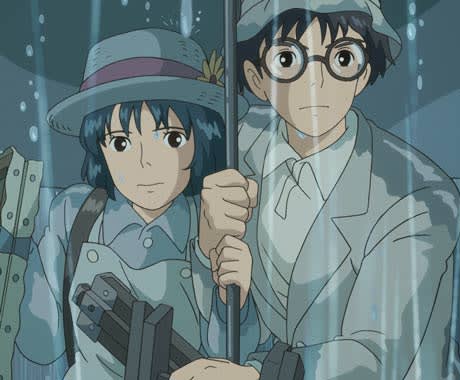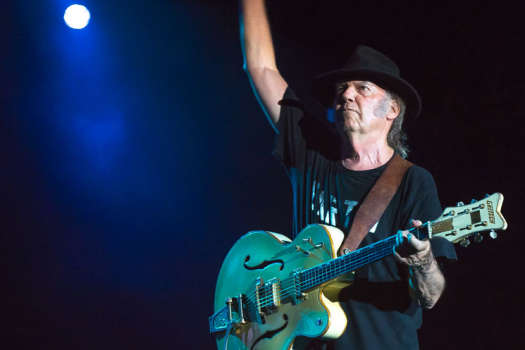In one of the first scenes of The Wind Rises, the 26th feature from acclaimed Japanese filmmaker Hayao Miyazaki, the film's lead protagonist is counseled by his mother after coming home battered and bruised from a fight with his fellow schoolmates. "Fighting," she tells him, "is never justified."
It's a subtly beautiful moment in a film that is set up to be one of the more progressive features in recent memory about the perils of warfare. Sadly, for a figure regarded in his native Japan as one of the best filmmakers/animators of his generation, Miyazaki's big screen adaptation of his popular manga series ultimately disappoints due to a befuddling storyline and paradoxical use of oversentimentality.
Based on the popular autobiography Eagles of Mitsubishi: the Story of the Zero Fighter, Rises tells the story of Japanese aeronautics engineer Jiro Horikoshi, a peasant boy from the outskirts of Fujioka who would go on to help revolutionize the modern fighter plane, and in doing so, boost Japan's fledgling economy.
Told through a linear narrative from the perspective of Horikoshi — beginning with his early years as a head-in-the-clouds bookworm who sees airplanes as being made of "beautiful dreams," to the final stages of his creation on the Mitsubishi A6M Fighter aircraft — Miyazaki pares down the fairy tale plot devices, lucid imagery and fantastical realms found in his previous films in favour of a storyline that directs its efforts towards visually depicting the drive and imagination of a single character.
Because of this, Rises, in some ways, feels like Miyazaki's most mature picture to date, due to its character-driven focus and historically accurate narrative. But by subtly repressing the visual beauty and CGI-rivaling colour palettes found in the middle of his career (1988's My Neighbor Totoro, 1997's Princess Mononoke), the film ultimately comes across as a tad lifeless when held up to his earlier work.
By channeling the majority of his efforts towards the screenwriting portion of the film, you'd think that Miyazaki would have spent more time refining the pacing of the film and inconsistencies found throughout his characters, particularly in the use of Horikoshi, a protagonist who spends the first half of the film dreaming of a better tomorrow, but quickly throws it to the wind once he meets a beautiful girl and decides to complete his aircraft even in the face of usage by the Triple Alliance. (When the film concludes rather abruptly at the tail end of the World War II, it becomes even harder to decipher the story's ultimate message, especially after having witnessed no real military action or sparks between he and his love interest Nohoko, a woman he claims to love, yet leaves for days at a time in his boss' guest bedroom even though she's suffering from a life-threatening disease.)
As with all Miyazaki films, watching them in a Western setting is a double-edged sword: part of the attraction to his oeuvre lies in the peculiarity of his work to foreign eyes. This is the man many consider to be the Walt Disney of Japanese cinema, yet visually, his films have consistently been described as light years ahead of its time in terms of technique; it's hard not to feel like you're missing something once the film has been dubbed in English and altered from the dialogue's native source (although John Krasinki's tongue-in-cheek delivery of aircraft engineer Horjo's hotheaded lines are particularly entertaining).
Still, for a film originally stated as Miyazaki's last feature (he's since retracted this statement), The Wind Rises leaves a lot to be desired and may make viewers question whether or not the bulk of his career has been a bit more style than substance.
(Disney)It's a subtly beautiful moment in a film that is set up to be one of the more progressive features in recent memory about the perils of warfare. Sadly, for a figure regarded in his native Japan as one of the best filmmakers/animators of his generation, Miyazaki's big screen adaptation of his popular manga series ultimately disappoints due to a befuddling storyline and paradoxical use of oversentimentality.
Based on the popular autobiography Eagles of Mitsubishi: the Story of the Zero Fighter, Rises tells the story of Japanese aeronautics engineer Jiro Horikoshi, a peasant boy from the outskirts of Fujioka who would go on to help revolutionize the modern fighter plane, and in doing so, boost Japan's fledgling economy.
Told through a linear narrative from the perspective of Horikoshi — beginning with his early years as a head-in-the-clouds bookworm who sees airplanes as being made of "beautiful dreams," to the final stages of his creation on the Mitsubishi A6M Fighter aircraft — Miyazaki pares down the fairy tale plot devices, lucid imagery and fantastical realms found in his previous films in favour of a storyline that directs its efforts towards visually depicting the drive and imagination of a single character.
Because of this, Rises, in some ways, feels like Miyazaki's most mature picture to date, due to its character-driven focus and historically accurate narrative. But by subtly repressing the visual beauty and CGI-rivaling colour palettes found in the middle of his career (1988's My Neighbor Totoro, 1997's Princess Mononoke), the film ultimately comes across as a tad lifeless when held up to his earlier work.
By channeling the majority of his efforts towards the screenwriting portion of the film, you'd think that Miyazaki would have spent more time refining the pacing of the film and inconsistencies found throughout his characters, particularly in the use of Horikoshi, a protagonist who spends the first half of the film dreaming of a better tomorrow, but quickly throws it to the wind once he meets a beautiful girl and decides to complete his aircraft even in the face of usage by the Triple Alliance. (When the film concludes rather abruptly at the tail end of the World War II, it becomes even harder to decipher the story's ultimate message, especially after having witnessed no real military action or sparks between he and his love interest Nohoko, a woman he claims to love, yet leaves for days at a time in his boss' guest bedroom even though she's suffering from a life-threatening disease.)
As with all Miyazaki films, watching them in a Western setting is a double-edged sword: part of the attraction to his oeuvre lies in the peculiarity of his work to foreign eyes. This is the man many consider to be the Walt Disney of Japanese cinema, yet visually, his films have consistently been described as light years ahead of its time in terms of technique; it's hard not to feel like you're missing something once the film has been dubbed in English and altered from the dialogue's native source (although John Krasinki's tongue-in-cheek delivery of aircraft engineer Horjo's hotheaded lines are particularly entertaining).
Still, for a film originally stated as Miyazaki's last feature (he's since retracted this statement), The Wind Rises leaves a lot to be desired and may make viewers question whether or not the bulk of his career has been a bit more style than substance.




